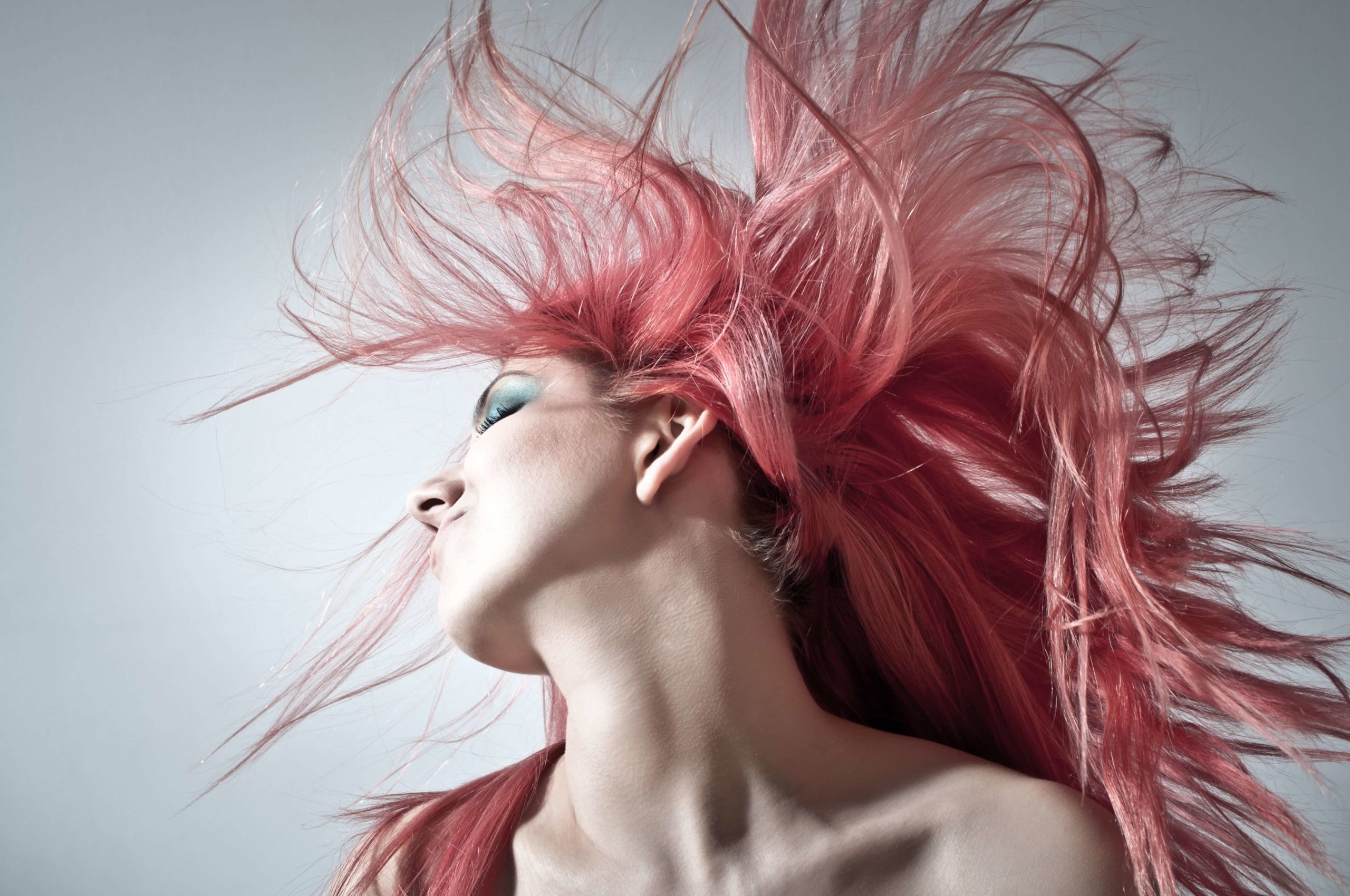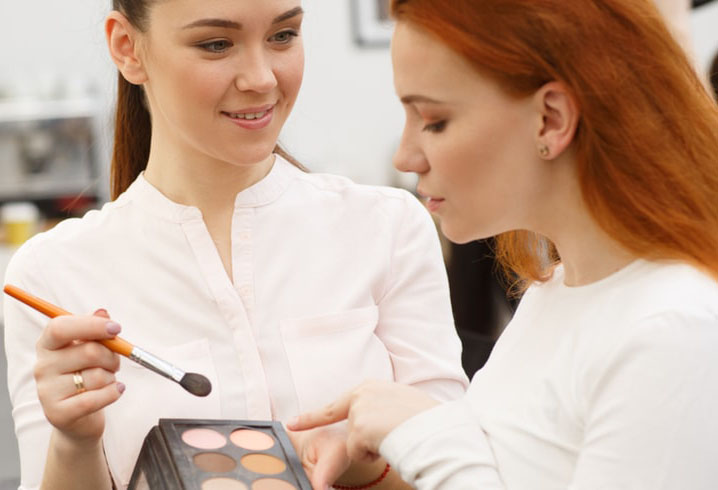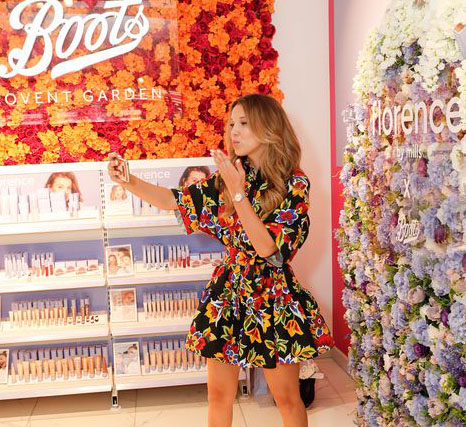10 beauty trends that will dominate in 2021

The beauty movements that shape the new decade
The beauty industry may prosper with novelty, but a slower approach is looming this year, with burgeoning sustainability moves. The 2020 spirit of beauty is also more inclusive than ever; from hyper-personalized product innovations to the rise of products that address topics previously considered taboo. From the ethical to the escapist, these are the trends to get excited about now …
Introducing: Wild Meadow1. Ageless beauty will be (belatedly) celebrated
In the second half of the past decade, brands and retailers have made significant strides in serving underrepresented communities. “In 2019, Superdrug announced its decision to only store foundations that are available in at least 20 different shades, after research has shown that two-thirds of black and Asian women do not believe that high-street brands meet their beauty needs do justice, “said the consultant dermatologist Dr. Justine Kluk reports on the time after Fenty Beauty, in which brands with a primer in a small color range are described as archaic. While products, from makeup to hair to skin care products, are more readily available for all ethnicities, body types, skin tones, gender expressions and identities, marketing in the beauty industry is still often guilty of the assumption that their customers are white and young.

Indeed, the inclusion of age in the diversity conversation about beauty has been found to be somewhat deficient. According to a study by L’Oreal Paris, 40 percent of women over the age of 50 do not feel seen (the brand itself has a long history of speaking to women over 40, with timeless news and mature beauty ambassadors). However, this is likely to change across the board, as brands now speak directly to the neglected generation X women (aged 45 and over). Brands are leading the way in a further shift away from “anti-aging” towards those who serve certain concerns – often with a view to hormone-related changes (menopausal women are a large and lucrative category, but until recently were considerably under-served) more products for Gen Xer. Look out for new launches in 2020 from L’Oreal Paris, Clarins, Trinny London, Korres and Boots No7.
2. Conscious capitalism and consumption: from ‘slow beauty’ to ‘blue beauty’
The growing focus on conscious capitalism has led beauty giants like L’Oréal to publicly commit to 100 percent environmentally friendly packaging (i.e. compostable or reusable) by 2025, while the British brand Lush (among other indie brands) is doing pioneering work has for zero packaging (“naked” as they call it) by successfully manufacturing solid products. Waterless beauty has also come into focus: in 2019 L’Oréal achieved a 60 percent reduction in water consumption per finished product, while Unilever halved the water associated with the use of its products by consumers. This year, a new Procter & Gamble hair line called Waterless is launched in the United States. As the most widely used ingredient in the industry, there are concerns that if these changes are not made, the demand for water may outstrip supply.

When it comes to conscious consumption, a collective slow (or slower) beauty position is taken in terms of sustainability and environmental ethics. The embossed “blue beauty” will also rise. The concept for products to protect the oceans and water supply (such as One Ocean Beauty, which works with the charity Oceana) is the “clean beauty of the next generation” according to WWD. The new decade is essential to the wellbeing of our planet, and the beauty industry can play a major role in this.
3. Microbiome skincare will become increasingly sophisticated

The Google search for “microbiome” (the microorganisms on and in your body) increased by +110 percent in 2019 compared to the previous year. According to Mintel, this is driving the UK facial care market. “There are a trillion microorganisms on the surface of your skin, and none of us on the planet have the same microbiome,” says Paula Begoun. It is therefore a challenge for bacteria-balancing ingredients in products for everyone. A step towards hyper-personalized skin care, however, will take into account your own microbiome, on which beauty giants like Johnson & Johnson work with a special microbiome platform. Dendy Engelman M.D., advisory dermatologist at Elizabeth Arden (who also focuses on this sector), confirms that “the microbiome will be at the forefront in 2020” to address everything from aging issues to acne. Maintaining bacterial homeostasis on your skin means that it “better reflects light, maintains hydration, and allows products to penetrate deeper,” she adds. Yes, please.
4. A hyper-personalised approach awaits

The use of skin smears to test bacterial analysis and DNA – and thus to obtain products that are tailored to your microbiome and your genome – are just two ways that we will take a more targeted approach to beauty in the new decade. Home tech can also help us explain our beauty needs. HiMirror uses a photo to analyze the condition of your skin and stores data to track progress over time and determine whether your products actually work for you. Like a skin care consultant at home, he can examine your skin for lines and wrinkles, dark circles, dark spots, spots, roughness and pore size. When it comes to makeup, Procter & Gamble will launch its Opte Precision Wand in 2020, which will detect blemishes and apply makeup to exactly that area without wasting product in places where coverage is not required . No, it’s not magic. For your hair, Sisley has developed the Hair Rituel Analyzer, a tool that enables accurate and tailored diagnosis of the scalp and hair fibers and allows you to better adjust your routine and track progress.
5. Beauty and mental health conversations will further converge

The microbiome is an example of how much the health and beauty worlds have joined together, as has the vegan beauty boom and the CBD market, which is bigger than ever, which all speaks for a holistic approach to beauty Becomes norm. When it comes to wellness, normalizing conversations about mental health has been one of the greatest cultural phenomena of the past decade, as Google’s search for “self-sufficiency” has increased 100 percent in the past five years. We believe that mental health will be a major focus for beauty brands in 2020, especially millennials (referred to as the “fearful generation”) and Gen Zers (who “report mental health problems more often”). According to a 2019 report compiled by WGSN on Gen Z’s beauty shopping habits, Fashionista awards “Gen Z brands that provide moments of calm, sensory experiences and products that support their physical, mental and emotional wellbeing.” Think of Revlon’s recent collaboration with model and activist Adwoa Aboahs Mental Health Organization Gurls Talk. It’s also likely why the “Mindful Mani” – the idea of hooking up music / podcasting while you have your nails done – launched by the UK’s leading beauty booking service, Treatwell, was so successful during Mental Health Awareness Month 2019 : the platform reached over 20 million people in eight countries to use the salon time especially for me. In addition to manicures (which affect your ability to swipe, scroll, and type), Treatwell also reports a 40 percent increase in massage bookings over the previous year, suggesting that we’re spending more on self-care and making moments of separation a priority.
6. Anti-pollution skincare will become as commonplace as sun protection
Latest figures show that 91 percent of the world’s population lives in places where air quality exceeds the guidelines of the World Health Organization and 4.2 million deaths occur annually due to exposure to outdoor air pollution. “This is double previous estimates and represents air pollution as the world’s largest single health risk to the environment,” notes Dr. Kluk. “Our skin is the main interface between our bodies and pollutants from road traffic, power generation, combustion of agriculture / waste and industry,” added the dermatologist. The result? “Aging characteristics such as wrinkles and dark spots are accelerated in heavily polluted environments, and the number of people with skin conditions such as acne is increasing.” So if sun exposure is the number one enemy of our skin, pollution is number two. Anti-pollution skin care is no longer seen as marketing, but is a must. In 2019, Liberty London saw a 57 percent increase in purchases of anti-pollution products, and the launch of skin care products will focus on it in 2020 (for example, Clé de Peau Beauté will re-launch its global bestseller, Correcting Cream Veil) Bring the market with pollution protection, sun protection factor and super light reflecting technology). “I assume that the demand for skin care products with an anti-pollution claim will increase in the coming year and that they will become just as common in our daily routine as sunscreen creams,” says Dr. Kluk.
7. Calls for ‘clean beauty’ to be defined with full transparency

In 2019, “clean beauty” gained momentum to become a mega category, but no one could actually agree on what defined it. Was that what the formulas said? Or what not? Is “clean” the same as “green” and “natural” (also capable of interpretation)? What about organic? Many brands saw a new marketing opportunity and jumped on the train, which led to a flood of greenwashing. Inaccuracies were common on the Internet, with “chemical” products being classified as “bad” – although each ingredient (both synthetic and natural) is a chemical. In the summer of 2019, an amendment to the EU regulations was introduced, which refers to “free of” information such as “free of parabens / silicones”, since in many cases there is no justification for their use. As the CTPA (Cosmetic, Toiletry and Perfumery Association) explains: “Ultimately, the consumer could be led to believe that a cosmetic product with certain” free “information is safer than another product that does not have this information, which is not possible true.”
A fight against misleading information in beauty is expected in 2020, with brands demanding full transparency, leading to clearer definitions of what can be considered “clean”. In addition to the ingredients, the ethical standards of the companies are checked in all phases of the product process. Look out for brands like HIGHR this year, a new cosmetics company that comes out with effective lipsticks and wants to create the “cleanest supply chain for beauty”.
8. We’ll adopt a ‘skinimalist’ approach

At this time last year, “Skip-Care” was added to our lexicon, a Korean trend that surpasses the tedious 10-step routine and promotes a more minimalist approach that often uses multipurpose products. It started here: In August, statistics from Mintel showed that 28 percent of British women reduced the number of products in their skin care products, with millennials aged 20 to 29 most likely to simplify their routines, 54 percent confirm this. It didn’t take us long to do “skin fasting” (popularized by the Japanese skin care brand Mirai Clinical) that played a role in many modern movements. For some, it was about the slow beauty mentioned above – the counter trend to excessive consumption of products created out of respect for our sustainability crisis (this is of course not limited to skin care, but to beauty purchases in general). For others, it was more wellness-related – like an intermittent fasting diet, it is supposed to help the skin detoxify. Of course, skin care companies are identifying new current ways to promote “resetting,” with skin care autophagy being a new trend that Dr. Engelman is predicted by Elizabeth Arden. She explains: “Autophagy simply means self-eating, a process that every cell in your body goes through. Processed foods and environmental toxins can slow down autophagy. To counteract this, you can activate the process with certain foods (think of antioxidants, teas) and different eating habits, such as intermittent fasting. “And she adds that there will be new ingredients that are formulated in products that act as autophagy activators.
Regardless of whether you withdraw your skin care or are looking for clever innovations to make skin behavior more efficient, it is clear that a “skin-malistic” approach does not have to be ineffective. If a minimalist lifestyle applies to your product habit but you don’t want to miss out on results, contact brands like Tandem Skincare. The collection of hardworking hybrid products should simplify your routine and at the same time reduce your consumption.
9. Gen Zers will practice prejuvination

Dr. Kluk is deliberate (as above) and believes that Gen Zers will also become increasingly familiar with skin care and will use serious routines earlier. “When you take care of your skin, it’s never too early to take an active interest in skin health,” she says. “Skin care has rejuvenated in the past and focused on prevention and rejuvenation.” She explains that while there is no real age to determine a routine that is appropriate for your skin type, the importance of healthy bodies for younger people is emphasized by talking about diet and exercise. Habits that keep your skin healthy should not be an exception. “Gen Z – the youngest and soon the largest consumer population – understands this very well. Early learning to cleanse, moisturize and protect your skin can improve self-esteem, relationships and professional development, reduce suffering and help us feel good with our skin for as long as possible. “Then she predicts that” the skin care offering for this knowledge-hungry, digitally savvy, environmentally conscious people will explode in 2020 and beyond. ” The beauty brand Florence by Mills by actress Millie Bobby Brown (see picture above) is a prime example of this. Having recently been recognized as a Specialty Launch of the Year at the WWD Beauty Inc Awards, it reconciles prejuvination with playful perfection.
10. Make-believe make-up will go mainstream

Make-up sales declined in 2019. 31 percent of us who wear it buy color cosmetics less frequently than in 2018. Even if modest consumption continues, 2020 will be the year of the make-up return to experimentation. Made popular by HBO’s hit series Euphoria and seen on the catwalks in spring / summer 2019, including Anna Sui, Dries Van Noten, Off-White and House of Holland (top), make-believe-make-up now feels very good . “2020 is the year you can experiment and play with your makeup and style,” says influential make-up artist Lisa Potter-Dixon. But she qualifies: “That doesn’t mean you have to cover your face with gems and neon eyeshadows,” like a model Pat McGrath takes care of behind the scenes. “If you put a touch of glitter in the middle of your eye under your lower lash line, you get a subtle sparkle,” she advises. “Use a liquid glitter like Stilas Magnificent Metals or, if you’re feeling adventurous, Gypsy Shrine some nice self-adhesive gemstones.” Try a colored liner for the day instead of your usual black. “Jewel-colored tones affect all skin tones and can highlight your natural eye color,” added Potter-Dixon. The same applies to hair: pearls and crystals adorned Dos on the spring walkways, while models went for a walk at Moschino with pastel-colored hair. From the beyond to wearable, playful beauty can only be the perfect antidote to our politically troubled times.

Comments are closed.